St. Petersburg, Russia WOW!
St. Petersburg WOW!!! The buildings, the churches, the architecture and the art WOW! Mike and I would have really liked three weeks in St. Petersburg not just 72 hours. We knew that there was a lot to see in a very limited amount of time so we hired a guide for the two full days that we were there. We were with the guide walking around for about 17 hours between the two days. It was really hectic and not at all our normal pace for this trip but with the three day hard limit for visitors with no visa we wanted to fit everything in that we could. We split the Hermitage between the two days with about three hours each day which is as much as we can do without completely glazing over. The first full day was tiring but the second one was really exhausting. Day 2 began with our feet already tired from the previous day. We started out walking from 9am until 2pm touring forts, cathedrals and side streets. We had already walked over 20,000 steps BEFORE we got to the Hermitage for our second stint. That probably wasn’t the correct sequence! Luckily the collections on the second day where some of my favourites. After the Hermitage we left our guide for a 30-minute rest before heading out to a show of Russian music, dancing and a late Russian dinner. It was very nice but we were really tired. Getting back to the hotel that night my watch showed 35,000 steps for the one day.
I don’t know what to say here about the Hermitage. You really need way more time to visit it properly. Having a guide who knew where the different collections were kept really helped. Luckily we hired a private guide so when he went through some of the rooms too quickly we could easily get him to slow down and wait for us (me) to finish browsing. Some rooms and some entire buildings were designed from scratch for the specific artwork on display in them. A large portion of the art was collected and/or commissioned by Catherine the Great. The Hermitage collection is split between several buildings around Palace Square. The buildings, the rooms and the architecture are as much works of art as are the paintings and the sculptures. There are full rooms of just Monet or just Rodin. There were multiple rooms dedicated to Renoir. It was absolutely great. I would like to have seen more of the Fabergé collection but most of that was in a separate Fabergé museum.
You can do a bit of a virtual tour of the Hermitage online. You need to remember that the collection is spread through many buildings. Here is the link for the Main Museum. To get to possibly my favourite, the collection in the General Staff building, you must select it from the All Tours dropdown list.
You can’t help but look at the city, the cathedrals, the art collections and not understand a little bit how the people’s revolution in places like Paris and Russia came to be. Seeing your royalty and nobles spending money on this unbelievable level of ostentation when your family and friends were starving would certainly be a problem to put it mildly. While this is undoubtedly true, I have to admit that as a tourist in this day and age St. Petersburg is a phenomenal place to visit.
As far as I know, St. Petersburg is the only European capital city designed and built from the ground up as a capital city. Tsar Peter the First (aka Peter the Great) is supposed to have personally laid out the city and the buildings. He very much liked the European style so none of the large churches and cathedrals are built in the traditional Russian style but are “western” in design. Tsar Peter 1 also largely got rid of the Russian stereotypes of men with large beards and wearing baggy clothes. This look was brought back in by a much later Tsar. St. Petersburg was founded in 1703 and the capital was moved there from Moscow in 1712. Peter 1 restricted the construction of stone buildings in all of Russia outside of St Petersburg so that all stonemasons would come to help build the new city. Peter 1 also imposed a toll on everyone traveling to St. Petersburg. The toll consisted of stone. The amount you had to bring depended on how you travelled i.e. foot, boat, cart etc. The many palaces and forts were designed with large empty spaces in front of them. This was so that one could see the enemy approaching. Now these are all lovely parks and squares spread throughout the city.
After Peter 1 died, Peter II moved the capital back to Moscow (1728) but he died 4 years later and the capital was then moved back to St. Petersburg. The capital stayed in St. Petersburg for almost 200 years until, in 1918, Lenin moved it to Moscow temporarily. This was due to the advancing Germans and the city’s proximity to other anti-Soviet armies. It has remained in Moscow to this day.
During the 1800s straight lines of buildings on streets was the fashion. Many sets of buildings with spaces between them had facades, often one room deep, added across the front so that one straight line of building(s) was seen from the street. The General Staff building (see photo below), where part of the Hermitage collection is stored, had a single matching facade erected that stretches for more than ½ km making it look like one single, huge building. Inside you see halls and entrances that lead off into the separate original buildings. It is an extremely attractive look. The one exception to this design are the churches that stayed separate and set back so that people can congregate in front of them.
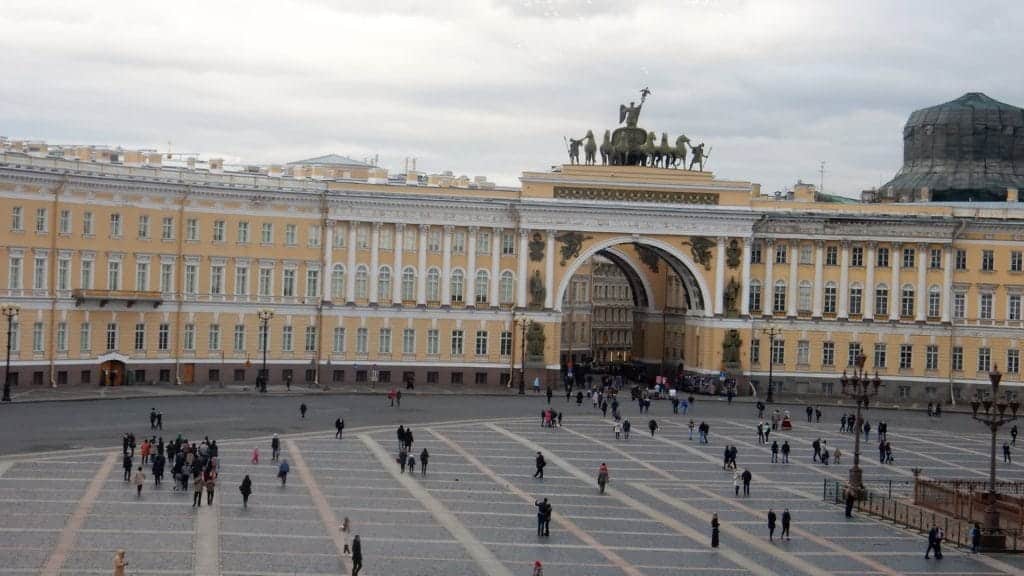
To finish off St. Petersburg history, as you probably know, WWII was terrible for the city. During the 900 day German siege more than 1,000,000 Russian civilians and 300,000 Russian soldiers died from starvation and disease. 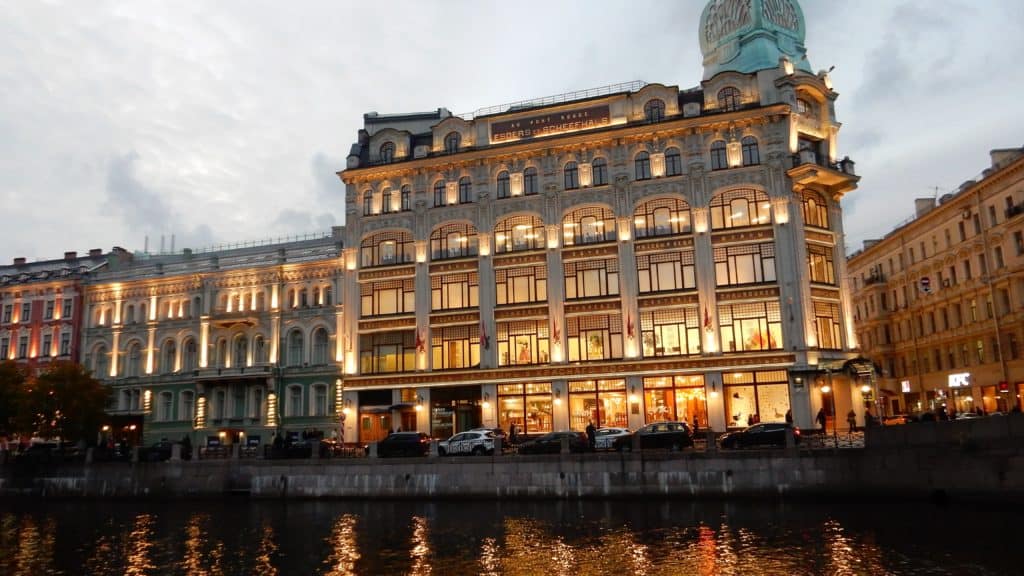
St. Petersburg went through multiple name changes including Petrograd and Leningrad. In 1991 the population voted to restore original name of St. Petersburg.
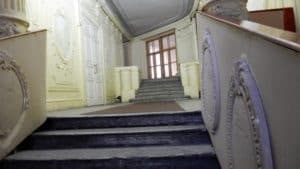
I can’t actually begin to tell you about the cathedrals that we visited, they were simply unbelievable. The photos that we have posted just give you a taste of what we saw. Simply walking around and and viewing the architecture was lovely. When you get away from the historic centre the look changes dramatically to the more standard Russian cement buildings. Even in the historic centre some of the buildings show definite signs of wear and tear. The main square in the centre of the city is St. Isaac’s Square. Our hotel was about one block from here. Luckily I had investigated the hotel on the internet. It talked about a really poor entrance before you got into the hotel proper. A few years ago, Mike was in China on business and visited a co-worker’s apartment. He said that the common area as you entered the building was extremely run down and unattractive and he was really wondering about where he was visiting. When he got inside the actual apartment it was lovely. This hotel was just the same. It is a private hotel with only 5 rooms for rent. The entrance and ground floor is shared with others. It takes faded elegance to a new level. The concrete steps are chipped, it is quite dark and all-in-all, if I hadn’t known what to expect we probably would have turned and run before we got to the room. On the second floor was a door that led into the private hotel. What a difference. The hotel was really nice. It was quite inexpensive so I had booked the executive suite. It was a large room with a couch and chairs and heated floors in the bathroom. There were only 5 rooms in the hotel and there were usually two or more very helpful people on duty. You would come in for a walk and you would instantly be asked if you wanted them to prepare some coffee or tea for you which would come with cookies and snacks.
The hotel was one of the original buildings in St. Petersburg. The foundations were laid in 1714. During the 1800s the building itself was destroyed (fire?) and rebuilt of stone. At one point in time it was the home of a well-known composer. A little later it was a manufacturing facility for musical instruments. During the soviet era it became an apartment building. In 2004 it was purchased and changed into a private hotel. The location was great and it was a very good choice even with that entrance.
We had been forewarned that pickpockets were a problem so we dressed accordingly. Traffic was very fast and somewhat scary. We had got used to traffic stopping instantly in all the Nordic countries when you got to a crosswalk. Mike used to say that many pedestrians didn’t even look for traffic at a crosswalk, they simply walked out into the street knowing that if there was traffic it would stop. That wouldn’t work in St. Petersburg!
Trying to get the locals, including our guide, to talk much about current or recent Russian history (Lenin onwards) is very difficult. One Russian did tell us that prior to Perestroika his father had been quite comfortable on his state pension. After Perestroika he had to leave retirement and go back to work. Although they were in the minority there were a reasonable number of tourist signs in English. People in restaurants and tourist sites often spoke some English. I assume that this is a huge difference from only 20 years ago.
In Norway we heard about the midnight sun. In St. Petersburg they talk a lot about “White Nights”. As you can probably tell from the photos rain and drizzle is apparently common in St. Petersburg.
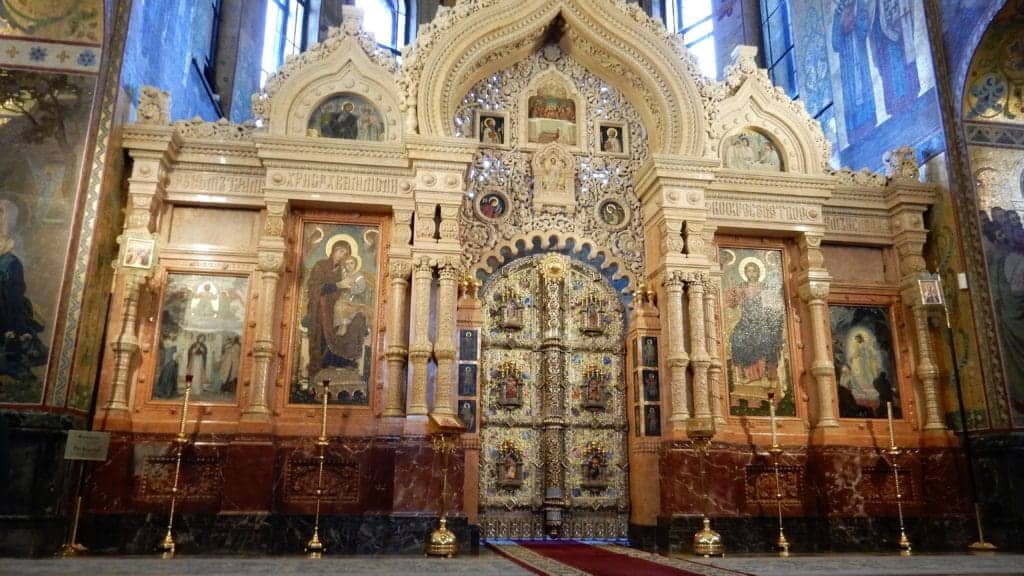
Unrelated to the city itself I wanted to just mention a discussion that we had with some other tourists on our way in to the city. There were six of us representing Canada, Italy, Spain, Australia and the US sitting and talking on the shuttle bus from the cruise ship. We were discussing Catalonia and the chance of separation and the recent vote that had just been taken. Coming from Canada a separation vote and campaign was something we were only too familiar with. One young lady stated definitely that Catalonia couldn’t ever become a country because it didn’t have an army and everyone knew that the first requirement to becoming a country was having an army. As you might guess, this was the one American. She didn’t get much support from anyone else. She was a very pleasant woman who loved traveling and wanted to learn about the world but it does show how absolutely ingrained the American right to bear arms attitudes are.
The cruise ship was full of international university students from across Europe, all taking advantage of the same three day visa free trip as Mike and I. How lucky to be one of them. They were very friendly and nice to talk with and all thought that the trip that Mike and I are on was their dream. We spent a bit of time with a couple who live just a few miles from where Mike and I used to live near Aurora. They were celebrating their 20th wedding anniversary.
Mike and I had decided that when we returned to Finland we would probably leave and take the ferry to Poland and start heading south. The only problem is that I have just found out (moments ago) that the ferry from Finland to Poland doesn’t run anymore. One issue with the internet is that you can often get out of date information. Since the weather in Helsinki is predicted to be 3C (37F) and still raining we are not inclined to stick around.

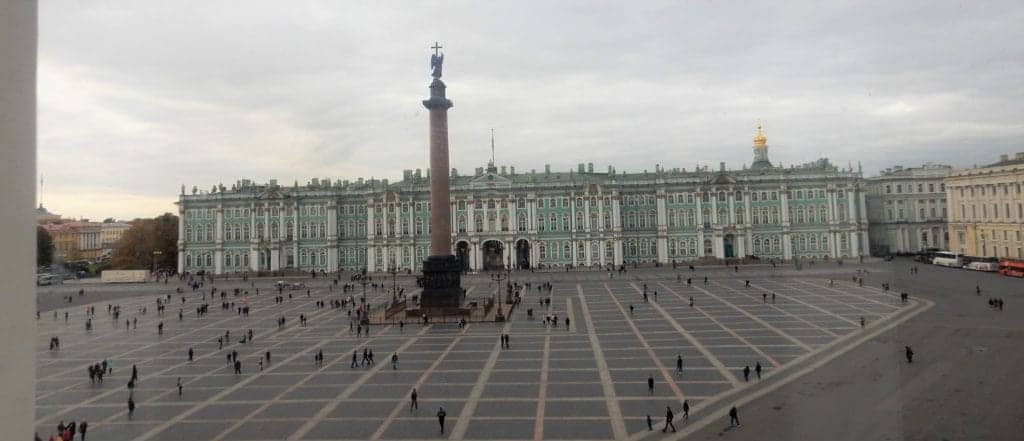
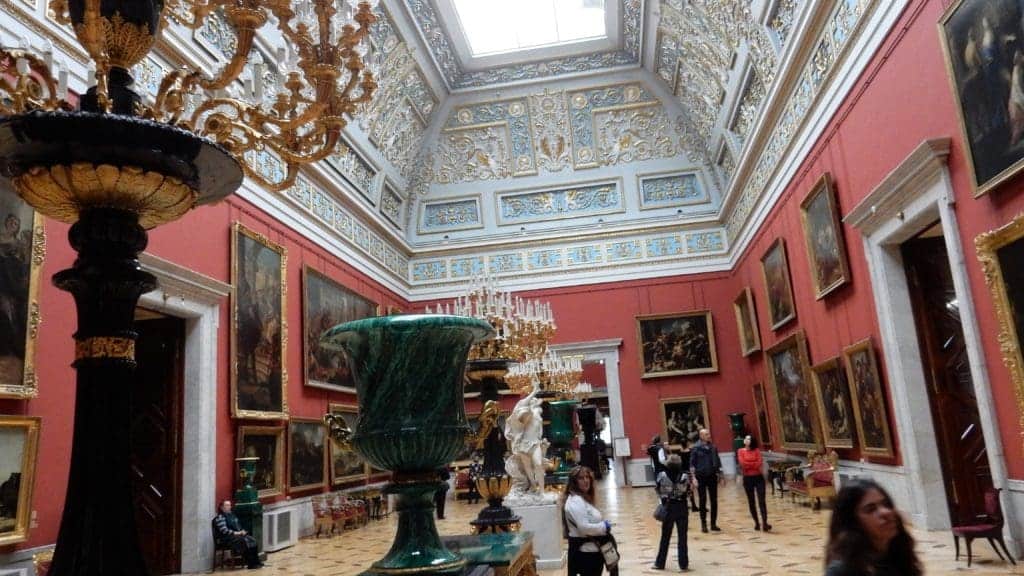
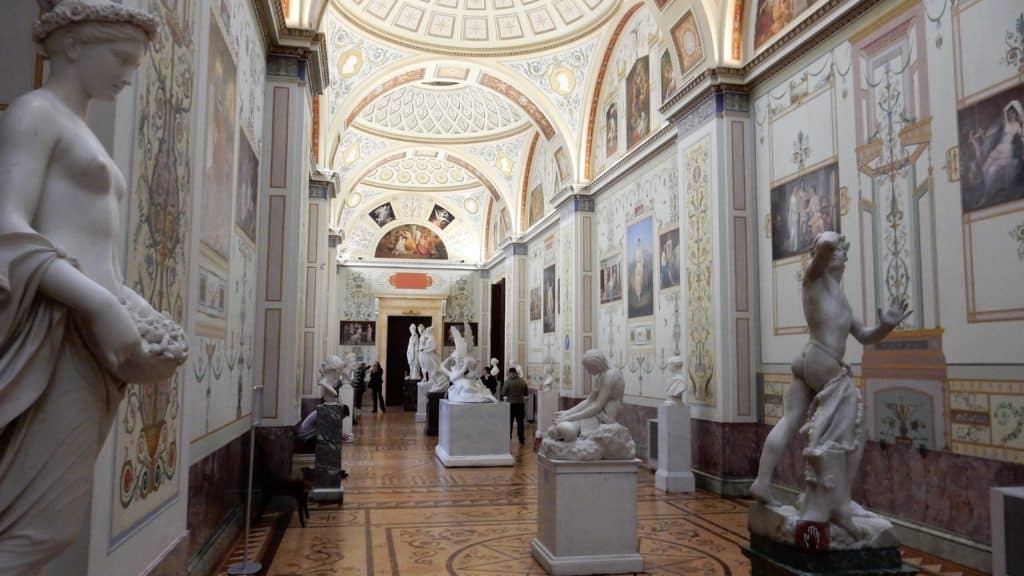
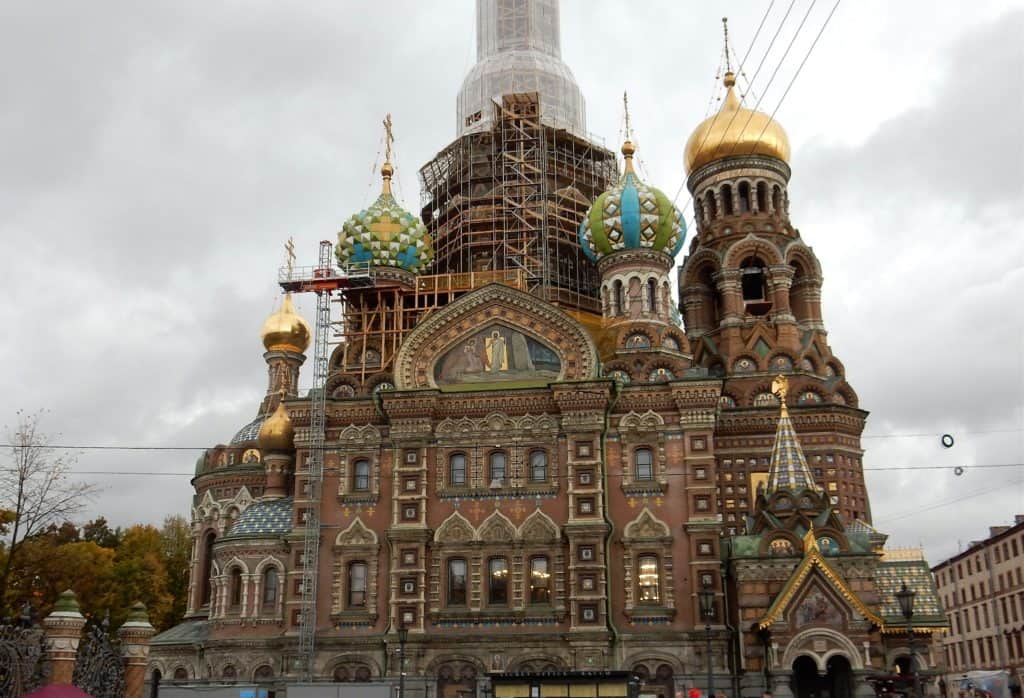
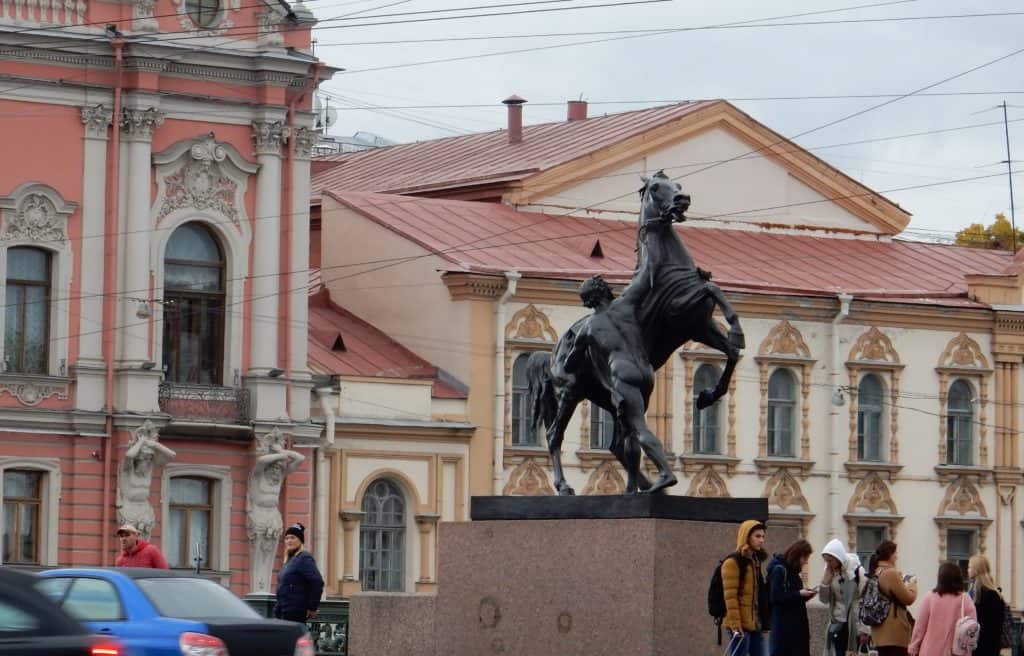
Leave a Reply